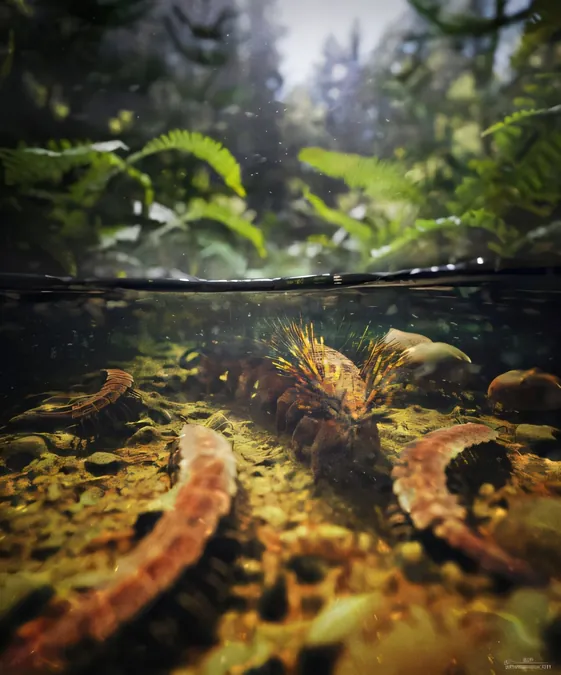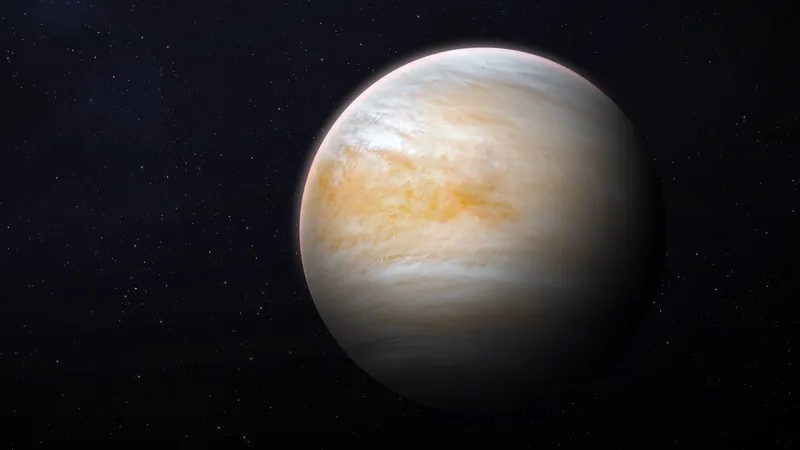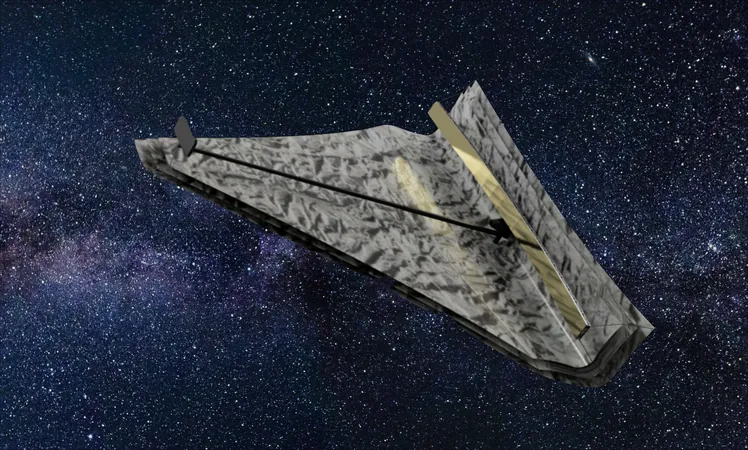
Unveiling Evolution: Ancient Fossil Discovered to Be Oldest Nonmarine Lobopodian!
2025-07-23
Author: William
A Shocking Discovery at Harvard's Museum!
In an astonishing twist that rivals the best detective stories, a long-misidentified fossil at the Harvard Museum of Comparative Zoology (MCZ) has been revealed as a groundbreaking find in the timeline of early animal evolution.
Originally labeled as a caterpillar back in 1865, the creature known as Palaeocampa anthrax has seen its classification bounce around like a ping-pong ball—first as a worm, then a millipede, and later a marine polychaete. Fast forward 130 years, and researchers have finally unearthed its true identity: the oldest known nonmarine lobopodian!
What Exactly Are Lobopodians?
Lobopodians, now-extinct soft-bodied organisms, serve as a fascinating link in the evolutionary chain connecting primitive worm-like ancestors to modern arthropods like insects and crustaceans. While most lobopodians have been found in Cambrian marine settings—like the famous Burgess Shale—they were thought to be strictly marine dwellers—until the advent of this extraordinary research.
Old Fossil, New Findings!
In a new study published in Communications Biology, researcher Richard Knecht—a Harvard Ph.D. graduate—has reclassified Palaeocampa anthrax as the first nonmarine and youngest lobopodian known so far, predating the iconic Burgess Shale lobopodians by nearly half a century. Knecht mused, "While lobopodians were probably common on Paleozoic sea floors, we believed they stayed in marine environments apart from tiny tardigrades and terrestrial velvet worms."
The Journey to Discovery!
Knecht, now a postdoctoral fellow at the University of Michigan, stumbled upon Palaeocampa while analyzing fossil millipedes in the MCZ collection. Noticing legs on every trunk ruled out the caterpillar theory, leading him down the path of discovery.
To validate this finding, the research team conducted a detailed analysis of 43 specimens from the Carboniferous Lagerstätten in Mazon Creek (U.S.) and Montceau-les-Mines (France). Utilizing state-of-the-art imaging techniques, they uncovered remarkable anatomical features, particularly nearly 1,000 bristle-like spines adorning its body.
Toxic Spines, Ancient Secrets!
Co-author Nanfang Yu, an associate professor at Columbia University, detected chemical residues at the tips of these spines using advanced spectroscopy, hinting that they may have secreted toxins to fend off predatory threats in their freshwater habitats. "I was amazed to find that fragments of biomacromolecules were excellently preserved," Yu noted, showcasing the depth of science behind fossil examination.
Meet Palaeocampa's Ancient Relative!
Palaeocampa's nearest known relative, Hadranax, lived nearly 200 million years earlier in the Cambrian period. Both shared a similar design—ten pairs of legs and a lack of eyes—but Palaeocampa stood out with its dense coat of spines, giving it a fuzzy, caterpillar-like look, while inhabiting freshwater environments.
A Glimpse into a Lost Ecosystem!
Significantly, this finding sheds light on the once-misunderstood fossil site in Montceau-les-Mines, previously believed to be marine. Knecht elucidated, "Mazon Creek contains a mix of aquatic environments, but Montceau, hundreds of kilometers from the ocean, confirms a freshwater setting, providing a rare view into ancient ecosystems."
A Broader Impact on Evolution!
This revelatory discovery not only enriches our understanding of lobopodian diversity but also prompts intriguing evolutionary questions. How many other species transitioned from marine to freshwater habitats, and how many more secrets are lurking in museum drawers, waiting to be discovered?
Though conditions for fossilizing soft-bodied creatures like lobopodians are exceedingly rare, every new find is a treasure trove of knowledge. Knecht emphasized, "The Carboniferous period offers fewer fossil opportunities than the Cambrian era, making each new discovery crucial."
A Historical Oversight in Plain Sight!
Ironically, Palaeocampa had remained hidden in plain sight for decades, residing feet away from the office of renowned paleontologist Stephen Jay Gould. "It was literally waiting to be looked at again," Knecht said. Sometimes, the most profound discoveries are those that have been overlooked!









 Brasil (PT)
Brasil (PT)
 Canada (EN)
Canada (EN)
 Chile (ES)
Chile (ES)
 Česko (CS)
Česko (CS)
 대한민국 (KO)
대한민국 (KO)
 España (ES)
España (ES)
 France (FR)
France (FR)
 Hong Kong (EN)
Hong Kong (EN)
 Italia (IT)
Italia (IT)
 日本 (JA)
日本 (JA)
 Magyarország (HU)
Magyarország (HU)
 Norge (NO)
Norge (NO)
 Polska (PL)
Polska (PL)
 Schweiz (DE)
Schweiz (DE)
 Singapore (EN)
Singapore (EN)
 Sverige (SV)
Sverige (SV)
 Suomi (FI)
Suomi (FI)
 Türkiye (TR)
Türkiye (TR)
 الإمارات العربية المتحدة (AR)
الإمارات العربية المتحدة (AR)